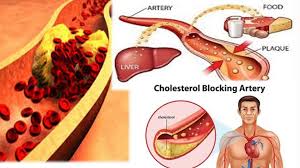
Create an outline of an executive summary that includes the type of problem, requirements, and proposed business problem solutions.
Order Instructions:
The assignment must build off this section….This is the project that I chose to write about.
Select a project for the purpose of completing the writing assignments of this course. Provide a rationale for your selection from an organizational strategy standpoint. Next, respond to at least two posts of your classmates, and comment on their project selection. Note: Ensure that you can develop enough information to thoroughly cover the project topic. Assume that your projects will have duration of 12 to 15 months with a functionally allocated project team. Adhere to confidentiality standards if you are discussing projects from your organization
Today, my organization uses a system called RightNow to respond to customer requests via email and fax. The company has been talking about switching to a new response system called Salesforce. The Salesforce system is supposed to be more user friendly and also coincides with the system our company uses to submit service orders; this will eliminate a lot of extra work for the agents that are completing these type of requests. It keeps them from moving back and forth from system to system. However, there a lot of things the company would need to take into consideration such as migration. All of the previous requests we’ve received in the RightNow system would need to be migrated to the new system. This is very important, being that there is no Third Party Verification being recorded for electronic requests it is our way of proving that customers are requesting the service should any legal issues come about. The end result of migrating to this new response system would make it easier on the agents completing the job.
Write a seven to eight (7-8) page paper in which you:
Recommend a project portfolio management method for your selected project. Provide a rationale for your recommendation. Note: Be sure to align your project with the strategic efforts of the organization.
Create an outline of an executive summary that includes the type of problem, requirements, and proposed business problem solutions.
State the vision and the goal of the project. Note: Be sure that the goals are Specific, Measurable, Attainable, Realistic, and Timely (S.M.A.R.T.).
Determine five (5) major deliverables of the project, and explain the importance of each major deliverable.
Provide the timeframe for delivering the solution to the project.
Create a table which contains the generic resources, including people, equipment, and materials needed to undertake the project. Note: These are only generic figures to give the Project Sponsor an idea of the level of resourcing required to finish the project.
Estimate the total budget for the project based on the cost of the resources specified in the table that you have created. Next, add contingency and any other additional costs (e.g., intangible costs, the cost of a change in culture or process within the business, etc.).Support your response.
Determine the key success criteria for your project. Provide a rationale to support your response.
Assume that your project is delivered on time, within scope, and budget. Justify your stakeholders’ satisfactory level with three (3) key success criteria, against which the project will be measured.
Use at least three (3) quality resources in this assignment. Note: Wikipedia and similar Websites do not qualify as quality resources.
Your assignment must follow these formatting requirements:
Be typed, double spaced, using Times New Roman font (size 12), with one-inch margins on all sides; citations and references must follow APA or school-specific format. Check with your professor for any additional instructions.
Include a cover page containing the title of the assignment, the student’s name, the professor’s name, the course title, and the date. The cover page and the reference page are not included in the required assignment page length
The specific course learning outcomes associated with this assignment are:
- Analyze corporate strategy and the project life cycle phases to define the project and initiate a project plan.
- Apply the concepts of project management to prioritize project portfolios and align the projects with corporate strategies, culture, and organization.
- Use technology and information resources to research issues in project management.
- Write clearly and concisely about project management using proper writing mechanics.
SAMPLE ANSWER
Proposed business problem solutions
Create an outline of an executive summary that includes the type of problem, requirements, and proposed business problem solutions.
Executive Summary
RightNow has done a great work in making sure customer requests via email and fax are responded to promptly. However, the only thing that is constant is change and when an organization does not embrace change, it is setting itself up for failure. To ensure this does not happen, my organization is seeking to adopt Salesforce. This is a new response system that will not only address customer queries and requests, but also capture the service orders from the sales agents. This would rope in the critical information and present it in real time to the critical decision makers allowing them to make the right decision given the right and latest information. The elimination of the service order requests and others requests of this type, the efficiencies to be achieved should be sufficient enough to supersede associated costs – migration, retraining and Third Party Verification.
Recommend a project portfolio management method for your selected project. Provide a rationale for your recommendation. Note: Be sure to align your project with the strategic efforts of the organization.
Project Portfolio Management Method
To achieve a successful switch-over from RightNow to Salesforce system, the project implementation will be anchored on the Portfolio, Programme and Project Management Maturity Model (P3M3) (Harold, 2011). The maturity model is suited for this challenge, since unlike other models where managers are more often than not in a reactive mode, the former expects and requires of its mangers to be in a proactive mode. An organization should not settle on producing excellent results occasionally, this should be the norm. Only then do its customers feel wanted – that the organization values them. The maturity model is especially useful in improving portfolio programme management processes. This will be achieved at fine levels – initial, repeatable, defined, managed and optimized processes (Ralph, Irwin & Ken, 2009).
State the vision and the goal of the project. Note: Be sure that the goals are Specific, Measurable, Attainable, Realistic, and Timely (S.M.A.R.T.).
Goal of the Project
In Salesforce, the organization will be able to achieve its desired long term goal of operating an effective and efficient business. This will mean the vision of the organization of making sure the customer requests and queries are addressed rapidly is achieved and additionally, that growing the business by getting sales orders in and deliveries out fast is vital. When these two components are made central to the operations of any organization, then the growth the organization can start to be experienced. For the organization, the pain that will be guaranteed with the switch will be smoothed over by the expected growth in order delivery and customer experience optimization that should make them more satisfied thus increasing sales (Jean, 2012).
Determine five (5) major deliverables of the project, and explain the importance of each major deliverable.
Deliverables
For this project, the deliverables will be critical in determining achievement of the objectives. The Salesforce is marketed as a programme that will make the turnaround time between raising a sales order and delivering on a sales promise. By making order rising instantaneous, the decision makers in the office who are responsible for preparing order requests from the field will now have better information when making decisions. Then will be able to determine which product/s trends and consumption cycles. To achieve this desired outcome, some of the tools to be used will include Brainstorming, Fishbone or Ishakawa Diagrams, Gnatt Charts (GC) and Critical Path Analysis Flow Diagrams (CPAFD). Each tool has its strengths that make is best suited for specific functions and aspects in the process (Batrol, & Martin, 2012).
| Brainstorm | Fishbone | CPAFD | G C | |
| Project brainstorming and initial concepts, ideas, structures and aims | 3 | 2 | ||
| Gathering and identifying all elements, especially causal and hidden factors | 1 | 3 | 2 | |
| Scheduling and timescales | 2 | 3 | ||
| Identifying and sequencing parallel and interdependent activities and stages | 1 | 3 | 1 | |
| Financial – costing, budgets, revenues, profits and variances | 1 | 1 | 2 | 3 |
| Monitoring, forecasting, reporting | 1 | 2 | 3 | |
| Troubleshooting, problem identification, diagnosis and solutions | 2 | 3 | 2 | 1 |
| ‘Snapshot’ or ‘map’ overview – non-sequential , non-scheduled | 2 | 3 | ||
| Format for communication, presentations, updates, progress reports | 1 | 1 | 3 |
3 – Main tool; 2 – Optional / Secondary tool; 3 – Sometimes useful
To successfully achieve the switch over from RightNow to Salesforce, the organization will need to designate a manager to be in-charge of this implementation – one who will be the Champion of Salesforce. This could be the IT manager since Salesforce is an IT based platform. In an effort to develop teamwork, the IT manager will be ably assisted by the Sales Manager and the Customer Experience and Relationship manager. This three-sided team has adequate input from the critical departments who are on the front line in having the Salesforce switchover.
Determine the key success criteria for your project. Provide a rationale to support your response.
Key Success Factors
In order for the switch-over to be successful, the methodology will follow the following guidelines. These guidelines are developed from intensive research and in as much as they are not the only ones; they offer a good guideline which if embraced, will make implementation seamless.
Define the project
This is vital in making sure that the risk of getting back-tracked, the management will have to communicate clearly beforehand to the employees, the defining management’s intent in undertaking the switch, outline the full extent of the switch-over project. This will entail pinpointing the department, functions and staff to be involved and their degree of involvement, a clear description of the end results of the switch-over project and its long-term effects if any on the organization and its components (Watson, 2013).
Establish a Project Organization
As pointed out earlier, the IT manager will take the lead in implementing this switch-over project. To capture the cross-cutting nature of this switch-over, the IT manager will have two principal assistants on this project – the Customer Experience and Relationship Manager and the Sales Manager. These two departments are the current main consumers of the project as presently configured. In addition to appointing experienced managers to run the projects full time, their terms of responsibilities will be clearly set out. This is further strengthened by the appointment of line managers of the main consumers of the project. In addition to the line managers, a dedicated staff of three people will permanently offer back office support for the project around the clock. This will ensure queries are addressed promptly and glitches in the system that could affect the end-consumers are troubleshot and addressed before they happen. Finally, a sensitive balance has to be established between the functional heads of department and the project manager (Kristoffer, Tor, Terry, 2007).
Install Project Controls
These special controls will focus of costs, quality and time. This is because; these components will not be captured as they would with routine reports. Time control; this is especially vital when undertaking the Critical Path Method-ideal for providing the best time control for the project. Cost Control; though this controls are not as formalized as time controls, they break the aggregate costs into work packages, develop obligation reports for technical decision makers and focusing human capital talent on major opportunities and problems. Quality Control; are envisioned to compromise of elements that define the performance criteria, use quality standards to express the objectives and monitor advancement towards these set standards (Robert & Randall, 2012).
Implementation Benchmarks
When implementing the switch-over, the main activities will include a Work Breakdown Structure (WBS). This allows for decomposition of the project in various levels of detailed tasks. It is this small parts that when managed optimally will ensure project success. A Dependency Analysis will organize the tasks recognized by WBS in a sequence that allows for order while allowing simultaneous implementation where applicable. After this, Network Development, which entails developing a network diagram that captures all tasks in an orderly fashion, will follow. When allocating or committing resources, the appropriate individuals with the requisite expertise and skill are identified and tasked adequately. The resources are allocated to ensure they are adequate and cover all phases – build up to the phase out. It is important to estimate the time it will take on each activity and the whole project. To achieve this, the organization will either employ the quantitative, constraint, forecast or unit of work methods. Irrespective of method chosen, the technique will consider the effort-energy exerted and calendar-duration elapsed. Budgeting is important and the next step. Budgeting allows for the allocation of related project development costs over the lifetime of the project. This ensures that costs do not pile up at the beginning of a project but appear as they are incurred – in the course of a project implementation timeline. Finally, the status report detailing the work-in-progress on the different components of the project – resource load, schedule and budgets is prepared. This assists to track the actual.
It is important to point out that studies have shown that there are no alternatives to project management methods. Should the organization choose not to implement and formalize project management; it will be choosing to work at random – no clear plan. By embracing project management, individual contributions – based on specific tasks developed as part of the whole, outcomes when joined together with others results and by individuals.
Having established the power of the project management as a technique, it should be noted that this power can be harnessed for both large and small projects. Given the multiplicity of benefits and uses of project management tools, some industries are especially suited for this. They include, manufacturing, servicing construction among others. By implementing the switchover project, the organization will benefit from reduction in the cost of doing business, a reduction in the time used to attend to customer queries and complains better resource allocation and increased quality of the final product or service. These are the factors that determine the competitiveness and profitability of the organization. By being able to break-down complex projects into small independent task, cost and time resources will be better managed and more gotten from them. Additionally, project management techniques accrue to the organization benefits including, failure reduction, reduction of inappropriate tasks, close examination of the sub-tasks, scheduling, integration and communication (Fuller, 2010).
When considering the cost of implementation, the switchover will be made up of two components: resource allocation and infrastructure needed, and implementation schedule. The switchover requires cross-organizational collaboration between the customer experience and relationship and sales departments. In the switchover project, it will be very important that the project costs management be inclusive of the vital processes central to the project completion within its approved budget. To achieve this, the resources to be considered include: resource planning – establishing the resources and precise quantities needed of each in performing project activities; cost estimation – determining an estimate of the costs needed to get the project to the desired conclusion; cost budgeting – apportioning the overall costs estimates to individual work items; and finally, cost control – controlling changes to project budget (Megginson, 2011).
| Recourse Planning | Cost Estimating | Cost Budgeting | Cost Control | |
| Information needed | · Work Breakdown Structure
· Historical information · Scope statement · Resource Pool Description · organizational policies |
· Work Breakdown Structure
· Recourse requirements · Recourse rates · Activity duration estimates · Historical information · Chart of accounts |
· Cost estimates
· Work Breakdown Structure · Project schedule
|
· Cost baseline
· Performance reports · Change requests · Cost management plan
|
| Tools and Techniques needed | · Expert judgment
· Alternatives identification |
· Analogous estimating
· Parametric modeling · Bottom-up estimating · Computerized tools |
· Cost estimating tools and techniques | · Cost change control system
· Performance measurement · Additional planning · Computerized tools |
| Results – Profits | · Recourse requirements | · Cost estimates
· Supporting detail · Cost management plan |
· Cost baseline
|
· Revised cost estimates
· Budget updates · Corrective action · Estimate at completion · Lessons learned |
Irrespective of the project dynamics, each project requires time to implement it. Having a grip on the time will enable the organization maximize its resources as well as operate efficiently and effectively. When considering the timeframe for the switchover project, the organization will have to consider the activity definition – pinpointing the project deliverables and specific activities to be performed. Activity sequencing – pointing out and documenting dependencies between interactivities (Meredith & Mantel, 2010). Activity Duration Estimating – given the individual activities, there is need to estimate the number of work periods needed. Schedule Development – sequencing activities, duration of activities and requirements for recourse when creating the project schedule and schedule control – changes to the project schedule.
For the migration to be considered successful, it must increase sales by 25%. In as much as Salesforce can be used by other department in the organization, as the name suggests it is meant to make selling effective and efficient. Despite the cost that the migration will cost the organization, the overall cost of doing business should come down by 10%. Finally, the bottom line should increase by 5%.
Provide the timeframe for delivering the solution to the project.
Timeframe
| Activity/Time | Months | |||||
| 1 | 2 | 3 | 4 | 5 | 6 | |
| Training of IT and back office staff on Salesforce | ||||||
| Training of sales staff on Salesforce | ||||||
| Training of Customer experience and relationship management staff | ||||||
| Training of Accounting staff | ||||||
| Migration to from RightNow to Salesforce | ||||||
| Activation of Salesforce and switch-off of RightNow | ||||||
Create a table which contains the generic resources, including people, equipment, and materials needed to undertake the project.
Generic Resources
| RESOURCE | COST |
| Project Champion (IT Manager) | – |
| Project Ambassadors (Sales and CE&R Managers) | – |
| Training | 10,000 |
| Data Entry Devices for the Sales team | 7,500 |
| Dedicated Server | 2,500 |
Estimate the total budget for the project based on the cost of the resources specified in the table that you have created. Next, add contingency and any other additional costs (e.g., intangible costs, the cost of a change in culture or process within the business, etc.).Support your response.
Project Budget
| ITEM | COST |
| Training | 15,000 |
| Data Entry Devices for the Sales team | 10,000 |
| Dedicated Server | 5,000 |
| Migration Costs | 70,000 |
| Total | 100,000 |
The Migration costs will include intangible costs. These are costs that will only be incurred as a direct result of the migration – whether successful or not. This will include cost of a change in culture and processes within the organization among others. This figure may seem huge, however when invested wisely, it will mean the difference between the success or failure of the migration.
Assume that your project is delivered on time, within scope, and budget. Justify your stakeholders’ satisfactory level with three (3) key success criteria, against which the project will be measured
Stakeholder Satisfaction
There are many stakeholders who have a stake on the successful migration from RightNow to Salesforce. To the management, the successful migration will result in better decision making. They will be able to get the latest information thus allowing them make strategic decision. When demand trends change, management does not have to wait for a long time to respond. The can anticipate this and act as opposed to reacting. The shareholders should be satisfied with the migration since it will have resulted in better returns from their investment. Additionally, since Salesforce is a new technology, the shareholders will feel that the strategic direction the management is taking the organization is agreeable to them. Finally, the sales force will be motivated when they get to interact with satisfied customers. The satisfaction of the customers will be enhanced by experiencing responses to the queries in a timely and comprehensive manner.
Conclusion
In conclusion, the success of the switchover project will depend on addressing some conditions of implementation. After initially adopting and embracing the project management philosophy, there is need to appreciate and acknowledge the remarkable benefits and profits that can be gained. Focus will, thus, be in ensuring the organization has sufficient cash flow; adequate existing and new infrastructure; the project manager and assistants are appointed, and that the requisite staff are hired and the resultant team satisfactorily developed.
References
Batrol K. M and Martin D. C (2012) Management, McGraw-Hill, New York, NY.
Fuller, J (2010) Managing Performance Improvement Projects: Preparing, Planning and Implementing, McGraw-Hill, New York, NY.
Harold K (2011) Project Management: A System Approach to Planning, Scheduling and Controlling, 6th Ed, McGraw-Hill, New York, NY.
Jean H (2012) Sharpen Your Team’s Skills in Project Management, Hoboken, New York, NY.
Kristoffer V. G, Tor H, Terry G (Editor),(2007) Goal Directed Project Management, 4th Ed, McGraw-Hill, New York, NY
Megginson L.C. (2011), Management, Concepts and Applications, Harper Collins Publishers Inc, Chicago, IL.
Meredith J.R. and Mantel S.J.Jr. (2010). Project Management, J. Wiley & Sons, Hoboken, NJ.
Ralph L. K, Irwin S. L, Ken L. R (2009) Project Management Methodology: A Practical Guide, J. Wiley & Sons, Hoboken, NJ
Robert J. G, Randall L. E (2012) Creating an Environment for Successful Projects: The Quest to Manage Project Management, The Jossey-Bass Business and Management, SF
Watson, M (2013) Managing Smaller Projects, Project Manager Today Publications, Miami, FL.
We can write this or a similar paper for you! Simply fill the order form!












